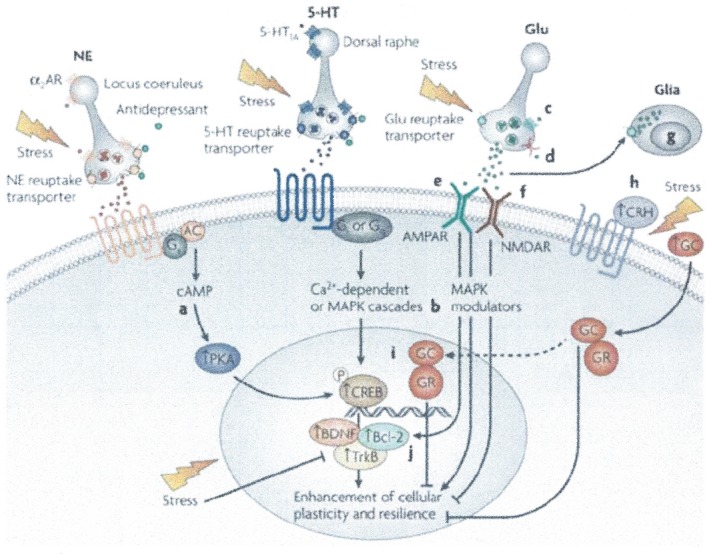Figure 1.

Cellular targets for the development of novel agents for the treatment of mood disorders. This figure shows the multiple targets by which transcription, neuroplasticity, and cellular resilience can be increased in mood disorders. (a) Phosphodiesterase inhibitors increase levels of pCREB; (b) MAP kinase modulators increase the expression of the of the major neurotrophic protein Bcl‐2; (c) mGluR II/III agonists modulate release of excessive levels of glutamate; (d) drugs such as lamotrigine and riluzole act on Na+ channels to attenuate glutamate release; (g) AMPA potentiators up regulate the expression of BDNF; (f) NMDA antagonists like ketamine, esketamine, and memantine enhance plasticity and cell survival; (g) novel drugs to enhance glial release of trophic factors and clear excessive glutamate may have utility for the treatment of depressive disorders; (h) CRF antagonists and (i) glucocorticoid antagonists attenuate the deleterious effects of hypercortisolemia, and CRF antagonists may exert other beneficial effects in the treatment of depression via non‐HPA mechanisms; (j) agents which upregulate Bcl‐2 (eg, pramipexole, shown to be effective in dipolar depression). These distinct pathways have convergent effects on the cellular processes such as bioenergetics (energy metabolism), neuroplasticity, neurogenesis, cellular resilience, and survival. Modified and reproduced from Blackburn9
